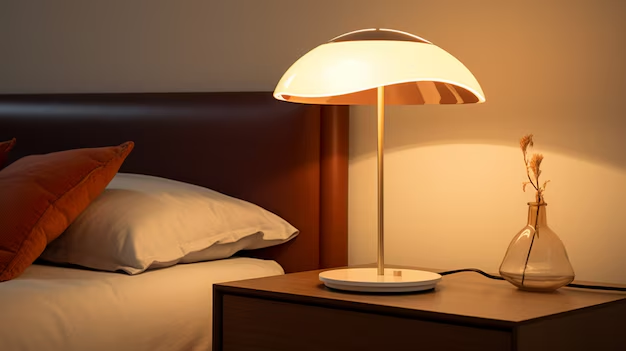When considering ways to enhance your home’s interior design, heat lamps might not be the first thing that comes to mind. Traditionally associated with practical functions like keeping food warm or providing heat in bathrooms, heat have evolved beyond their utilitarian origins. Today, they offer both style and functionality, providing warmth while serving as stylish design elements. This comprehensive guide explores how you can integrate heat lamps into your home’s interior design, transforming them from mere appliances into integral components of your decor.
Understanding Heat Lamps and Their Benefits
Before delving into design integration, it’s essential to understand what heat are and the benefits they offer.
What Are Heat Lamps?
Heat lamps use infrared light to emit heat, which warms up objects and people in their immediate vicinity. Unlike conventional heating systems that heat the air, heat provide targeted warmth, making them efficient for specific areas. They come in various forms, including wall-mounted units, freestanding models, and integrated fixtures. Modern heat lamps are designed with aesthetics in mind, featuring sleek lines, stylish finishes, and advanced technology to enhance their functionality and appeal.
Benefits of Heat Lamps
- Efficient Heating: Heat lamps provide direct, concentrated warmth, making them energy-efficient for specific areas. This focused heating reduces the need for central heating systems to work overtime, potentially lowering energy bills.
- Enhanced Comfort: By providing warmth in targeted areas, heat lamps can enhance comfort in spaces like bathrooms, outdoor patios, and living rooms, making them more inviting and enjoyable.
- Stylish Designs: Contemporary heat lamps come in a range of designs, from sleek and modern to rustic and vintage. This variety allows them to complement different interior styles while offering practical benefits.
Integrating Heat Lamps into Different Interior Styles
Heat lamps can be seamlessly integrated into various interior design styles, adding both warmth and aesthetic value. Here’s how to incorporate them into some popular design themes:
1. Modern and Minimalist Interiors
Modern and minimalist interiors emphasize clean lines, simplicity, and functionality. Heat in these spaces should blend seamlessly with the overall design while providing essential warmth.
Recessed Heat Lamps
Recessed heat lamps are ideal for minimalist interiors. These units are installed flush with the ceiling or walls, creating a clean look without disrupting the room’s streamlined aesthetic. They provide targeted warmth without drawing attention to themselves, making them perfect for modern spaces.
Sleek Floor and Table Lamps
For a minimalist look, choose heat lamps with sleek, understated designs. Opt for models with metallic finishes like brushed steel or matte black, and simple, geometric shapes. These lamps can be placed strategically around the room to add warmth without overwhelming the space.
2. Industrial and Urban Chic
Industrial design embraces raw materials, exposed structures, and a mix of vintage and modern elements. Heat lamps with an industrial edge can enhance these rugged, urban spaces.
Exposed Bulb Heat Lamps
Heat lamps with exposed bulbs and metal cages fit perfectly into industrial settings. These can be mounted on walls or ceilings, adding both functionality and character to the room. The industrial design elements, such as brass or steel finishes, contribute to the overall aesthetic.
Freestanding Industrial Heaters
Freestanding heat lamps with an industrial design are great for creating a focal point in living rooms or loft spaces. Look for lamps with metal bases, exposed hardware, and adjustable arms. These designs add an edgy, utilitarian touch to the decor while providing warmth.
3. Rustic and Country Interiors
Rustic and country interiors are characterized by natural materials, cozy textures, and a warm, inviting atmosphere. Heat lamps can complement this style by adding both functional warmth and aesthetic charm.
Wood and Metal Combinations
Choose heat lamps that combine wood and metal elements to match the natural materials found in rustic interiors. Wooden bases or accents paired with metal fixtures can create a harmonious look. Place these in living rooms, kitchens, or dining areas to enhance the cozy, country feel.
Vintage-Inspired Designs
Heat lamps with vintage-inspired designs, such as those featuring antique brass or wrought iron, can add a touch of nostalgia to rustic spaces. These can be used to illuminate key areas like reading nooks or dining tables, blending seamlessly with traditional decor.
4. Scandinavian Design
Scandinavian design focuses on simplicity, functionality, and creating a sense of hygge, or coziness. Heat can enhance this aesthetic by providing warmth and complementing the minimalist, natural design elements typical of Scandinavian interiors.
Neutral and Natural Materials
Opt for heat lamps in neutral tones like white, grey, or beige, with natural materials such as wood or ceramic. These designs align with the Scandinavian emphasis on simplicity and natural beauty. Place these in living rooms, bedrooms, or dining areas to create a warm, inviting environment.
Minimalist and Functional Designs
In Scandinavian interiors, choose heat lamps with minimalist designs that focus on functionality. Recessed or wall-mounted lamps can provide warmth without detracting from the clean, uncluttered look of the space. Dimmable features can also enhance the cozy, adaptable atmosphere.
Creative Ways to Use Heat Lamps in Your Home
Integrating heat into your interior design isn’t just about choosing the right style; it’s also about finding creative ways to use them. Here are some innovative ideas for incorporating heat lamps into various areas of your home:
1. Bathrooms
Bathrooms are one of the most common places to use heat lamps, as they provide instant warmth and comfort after a shower or bath. Here’s how to integrate heat into your bathroom design:
Overhead Installation
Install heat in the ceiling to provide even warmth throughout the bathroom. This setup ensures that the entire space is heated, making it more comfortable and pleasant to use.
Integrated Fixtures
Consider heat lamps integrated into bathroom lighting fixtures. These fixtures combine overhead lighting with built-in heating elements, offering a sleek, space-saving solution that enhances both functionality and style.
2. Living Rooms
Living rooms are central to home life and can benefit from added warmth, especially during colder months. Here’s how to creatively use heat lamps in your living room:
Reading Nooks
Place a stylish floor lamp or table lamp with a heat element in a reading nook. This setup provides both light and warmth, creating a cozy spot for relaxation and reading.
Accent Lighting
Use heat lamps as accent lighting to highlight specific areas or features in the living room. Position a floor lamp near a piece of artwork, a feature wall, or a decorative piece to draw attention and add warmth to the space.
3. Dining Areas
Dining areas are ideal for heat lamps, as they can enhance the dining experience by providing warmth and creating a comfortable atmosphere.
Pendant Heat Lamps
Hang pendant heat over the dining table to provide both warmth and focused lighting. Choose designs that complement your dining room decor and create a stylish focal point.
Table Lamps on Buffets
Place table with heat elements on buffets or sideboards in the dining area. These can provide additional warmth and light while enhancing the overall aesthetic of the space.
4. Outdoor Spaces
Outdoor spaces like patios, decks, and balconies can be transformed with the addition of heat , extending their usability throughout the year.
Freestanding Outdoor Heaters
Use freestanding outdoor heat lamps to create a warm, inviting environment for outdoor gatherings. These heaters can be placed around seating areas or dining tables to provide warmth and comfort during cooler evenings.
Wall-Mounted Heat Lamps
For smaller outdoor spaces, consider wall-mounted heat that provide targeted warmth without taking up floor space. These lamps are ideal for balconies or compact patios and can be installed to provide warmth where it’s needed most.
Tips for Choosing and Installing Heat Lamps
When incorporating heat lamps into your interior design, consider the following tips to ensure you select the right models and achieve optimal results:
1. Assess Your Needs
Determine where you need warmth and how much heat you require. This will help you choose the appropriate type and size of heat lamp for your space. For example, a bathroom may need a different type of heat lamp compared to a large living room or outdoor area.
2. Select the Right Style
Choose heat lamps that complement your existing decor and design style. Consider the finish, material, and design of the lamp to ensure it fits seamlessly into your space while providing the desired warmth.
3. Consider Energy Efficiency
Opt for energy-efficient heat lamps that provide warmth without significantly increasing your energy bills. Look for models with adjustable settings or timers that allow you to control the level of heat and reduce energy consumption.
4. Ensure Proper Installation
Follow manufacturer guidelines for installation to ensure safety and optimal performance. If you’re installing wall-mounted or ceiling-mounted heat lamps, consider hiring a professional to ensure proper placement and secure installation.
5. Regular Maintenance
Keep your heat clean and well-maintained to ensure they operate efficiently. Regularly dust or wipe down the to prevent buildup and check for any signs of wear or damage.
Conclusion
Integrating heat into your home’s interior design offers a unique opportunity to enhance both style and functionality. By selecting the right designs and creatively incorporating them into different areas of your home, you can enjoy the benefits of warmth and comfort while adding a stylish touch to your decor. Whether you’re looking to complement a modern, industrial, rustic, or Scandinavian interior, heat can provide the perfect balance of aesthetics and practicality. With thoughtful selection and placement, heat can become an integral part of your home’s design, enhancing the ambiance and making your space more inviting year-round.


